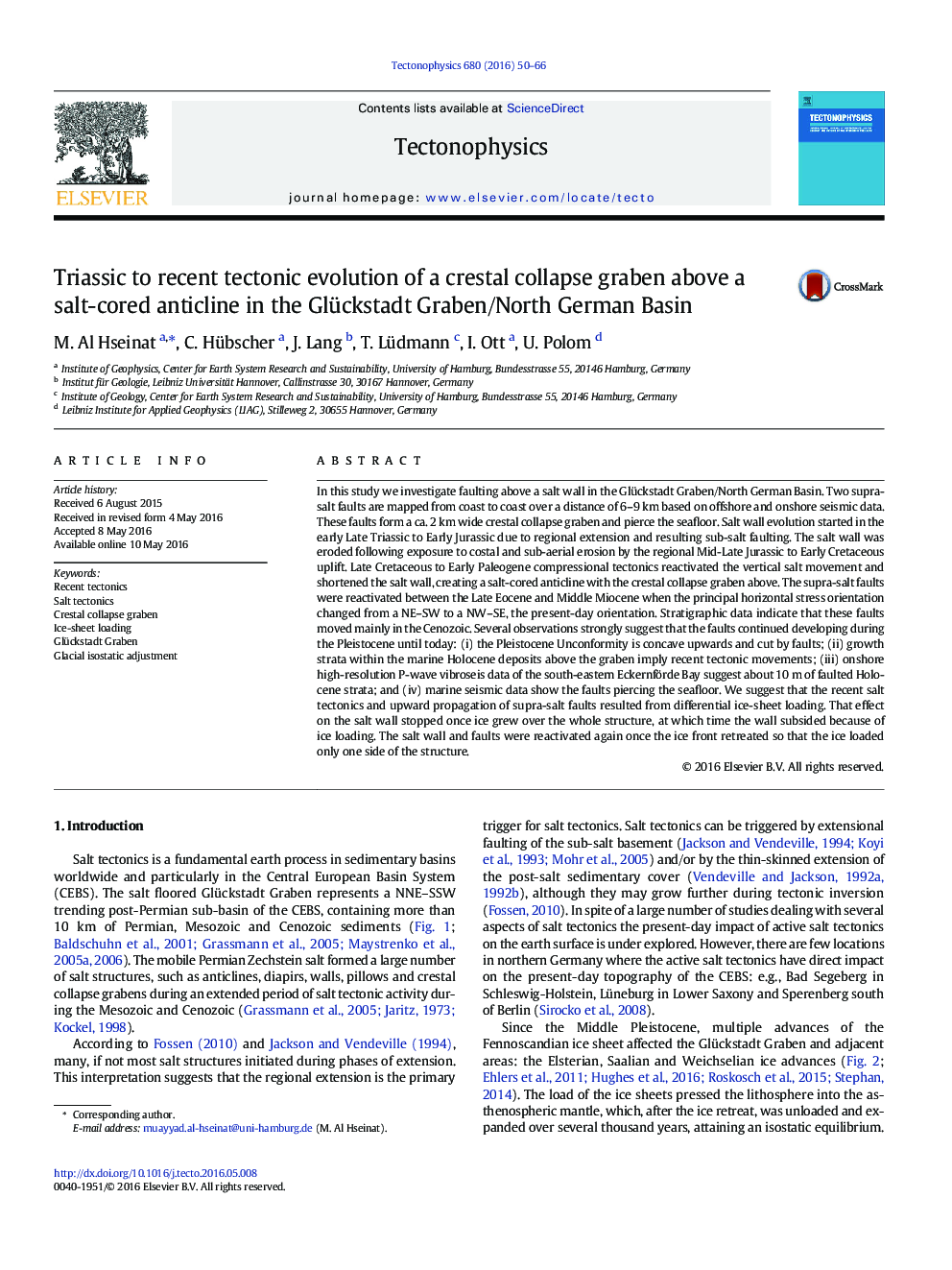| کد مقاله | کد نشریه | سال انتشار | مقاله انگلیسی | نسخه تمام متن |
|---|---|---|---|---|
| 6433344 | 1636718 | 2016 | 17 صفحه PDF | دانلود رایگان |

- Two supra-salt faults form a crestal collapse graben in the Glückstadt Graben.
- Faults cut the entire post-Permian strata from top of salt into Holocene deposits.
- Stratigraphic data indicate that these faults moved mainly in the Cenozoic.
- Faults continued developing during the Pleistocene until today.
- Recent salt tectonics and fault reactivation due to differential ice-sheet loading
In this study we investigate faulting above a salt wall in the Glückstadt Graben/North German Basin. Two supra-salt faults are mapped from coast to coast over a distance of 6-9Â km based on offshore and onshore seismic data. These faults form a ca. 2Â km wide crestal collapse graben and pierce the seafloor. Salt wall evolution started in the early Late Triassic to Early Jurassic due to regional extension and resulting sub-salt faulting. The salt wall was eroded following exposure to costal and sub-aerial erosion by the regional Mid-Late Jurassic to Early Cretaceous uplift. Late Cretaceous to Early Paleogene compressional tectonics reactivated the vertical salt movement and shortened the salt wall, creating a salt-cored anticline with the crestal collapse graben above. The supra-salt faults were reactivated between the Late Eocene and Middle Miocene when the principal horizontal stress orientation changed from a NE-SW to a NW-SE, the present-day orientation. Stratigraphic data indicate that these faults moved mainly in the Cenozoic. Several observations strongly suggest that the faults continued developing during the Pleistocene until today: (i) the Pleistocene Unconformity is concave upwards and cut by faults; (ii) growth strata within the marine Holocene deposits above the graben imply recent tectonic movements; (iii) onshore high-resolution P-wave vibroseis data of the south-eastern Eckernförde Bay suggest about 10Â m of faulted Holocene strata; and (iv) marine seismic data show the faults piercing the seafloor. We suggest that the recent salt tectonics and upward propagation of supra-salt faults resulted from differential ice-sheet loading. That effect on the salt wall stopped once ice grew over the whole structure, at which time the wall subsided because of ice loading. The salt wall and faults were reactivated again once the ice front retreated so that the ice loaded only one side of the structure.
176
Journal: Tectonophysics - Volume 680, 12 June 2016, Pages 50-66